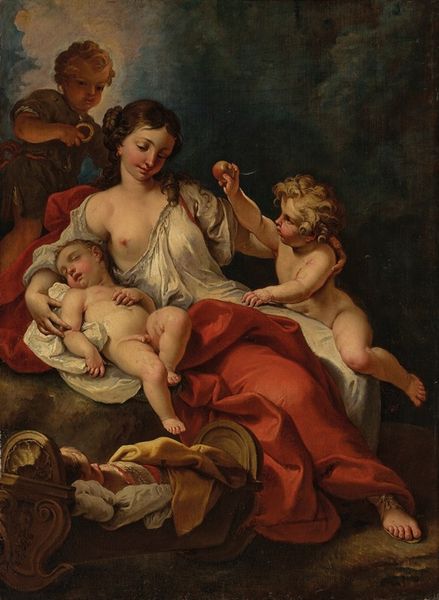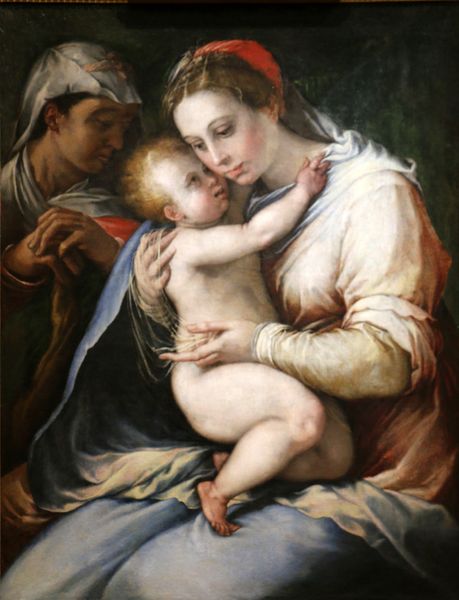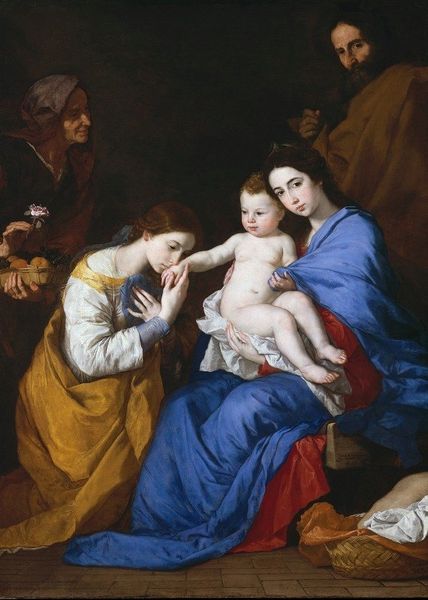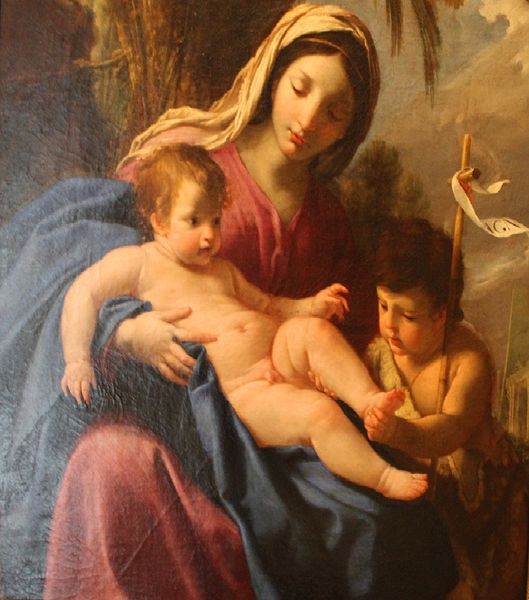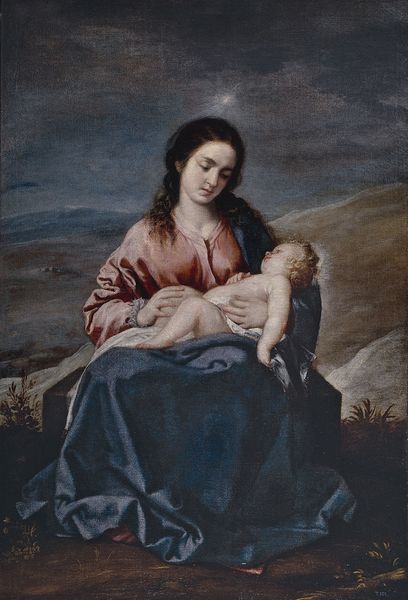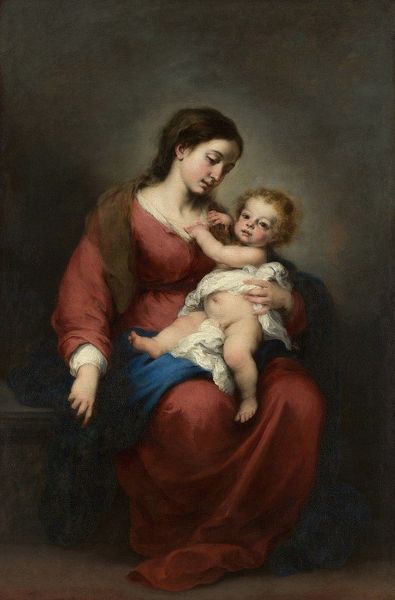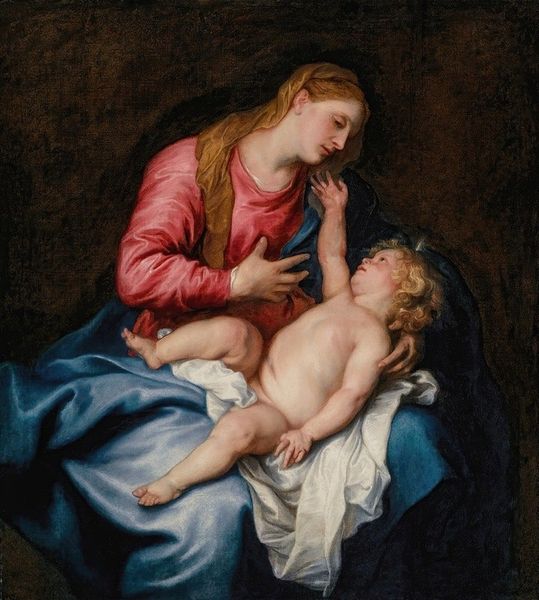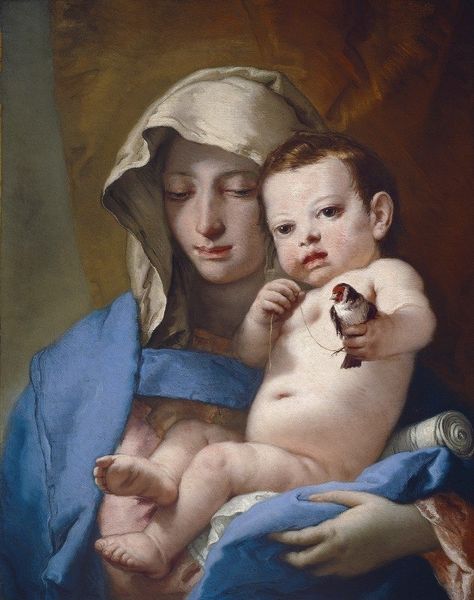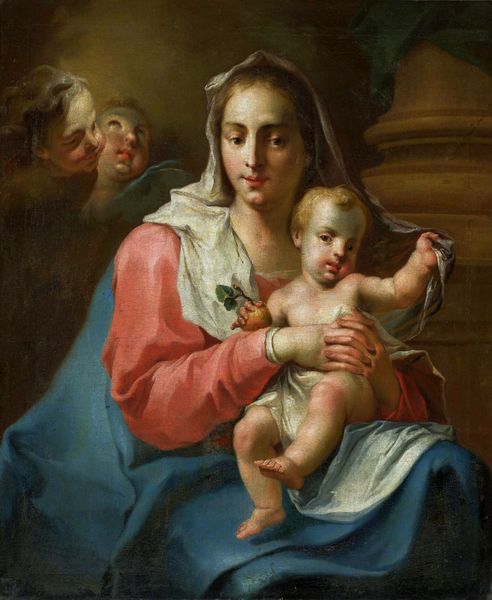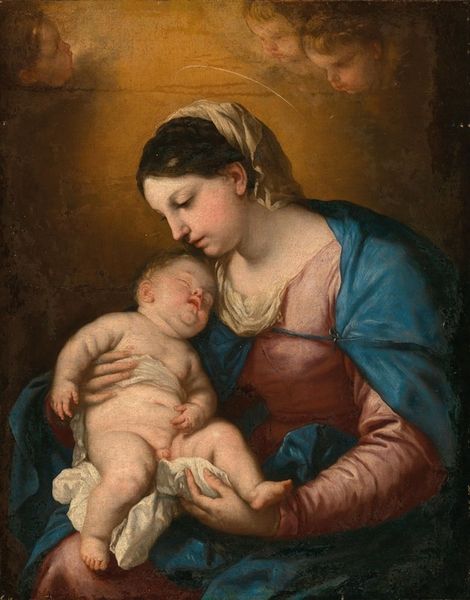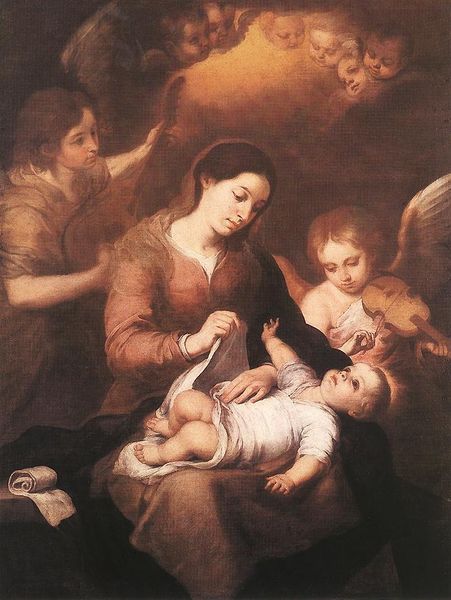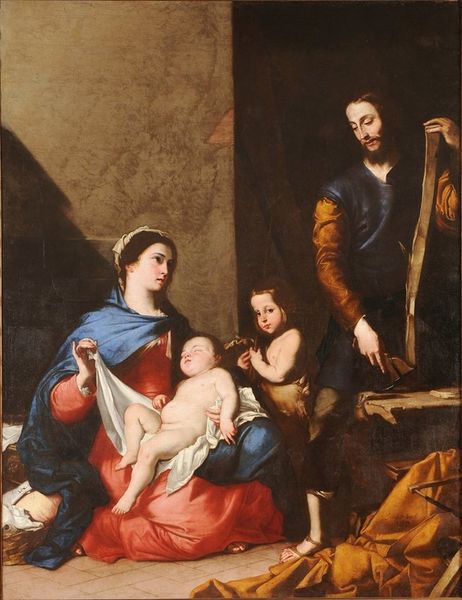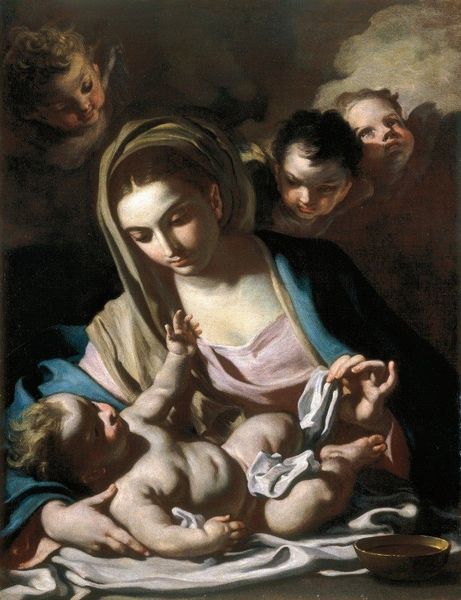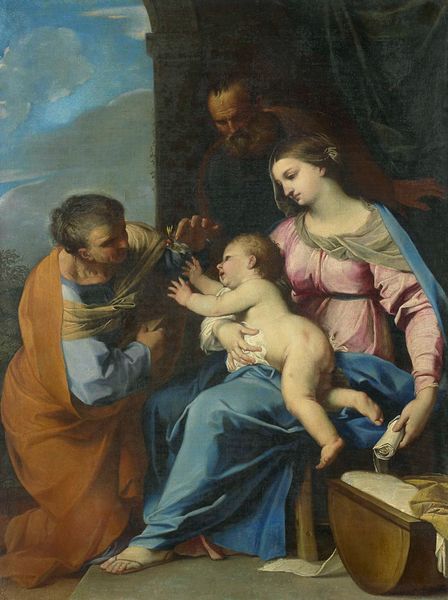
Dimensions: 200 x 148 cm
Copyright: Public domain
Editor: Here we have Goya's "The Holy Family," painted in 1780. The use of oil on canvas gives it a remarkable depth. I find the heavy darkness contrasted with the illumination of the figures really intriguing, and the two children add so much action. How do you interpret this work? Curator: Looking at this Goya, it is essential to remember the social climate in which it was created. The Spanish court under Charles III had very particular expectations of art. It was supposed to be didactic, morally uplifting, and representative of royal power and piety. "The Holy Family," seemingly a straightforward religious subject, becomes interesting when considering Goya’s other works. The faces don’t seem idealized but very realistic and lifelike. Don't you find something a bit too human in their expressions, devoid of excessive holiness? Editor: I can see that, especially with Joseph in the background. Almost… domestic? So, you're suggesting that Goya is subtly challenging the conventional representations encouraged by the Crown? Curator: Precisely. While fulfilling his commission and not explicitly subverting, Goya subtly humanizes his subjects, imbuing them with a relatable quality that may have resonated with the growing Enlightenment ideals seeping into Spanish society. Consider how it subtly navigates the tricky ground of representing both the divine and the everyday for public consumption. Do you see anything that supports a broader social or political message? Editor: Perhaps the relatable expressions of the figures make it more accessible to the public. They are still clearly meant to represent The Holy Family but shown more within reach, more ordinary and humble. Curator: And perhaps, in making them relatable, Goya democratizes the sacred, challenging the established Church authority and prompting new personal reflection from viewers. What have you gained after examining "The Holy Family?" Editor: Understanding the painting’s context gives it much more depth than simply admiring its composition or beauty! Thanks! Curator: Absolutely. Context illuminates how art becomes a conversation within society.
Comments
No comments
Be the first to comment and join the conversation on the ultimate creative platform.
